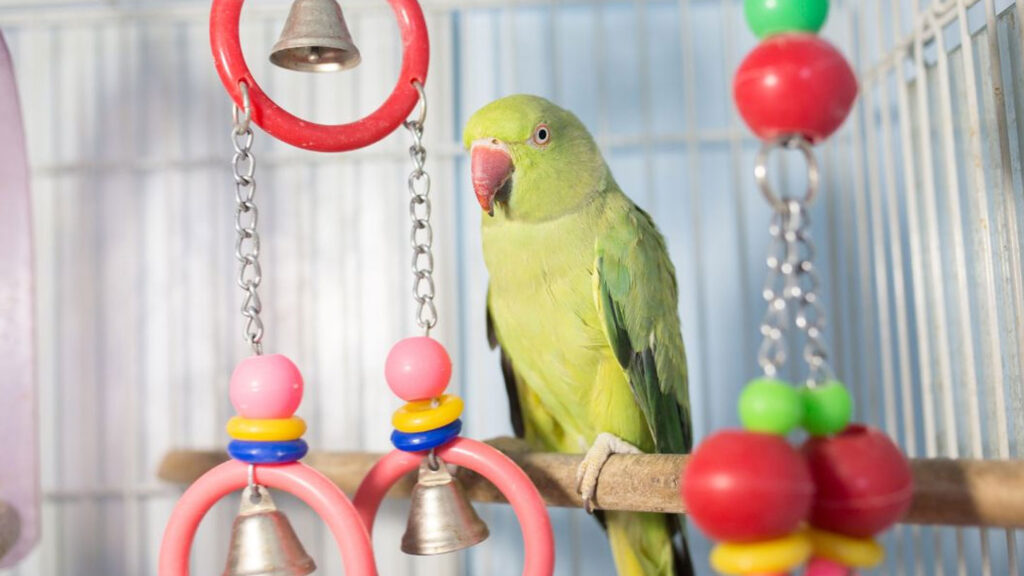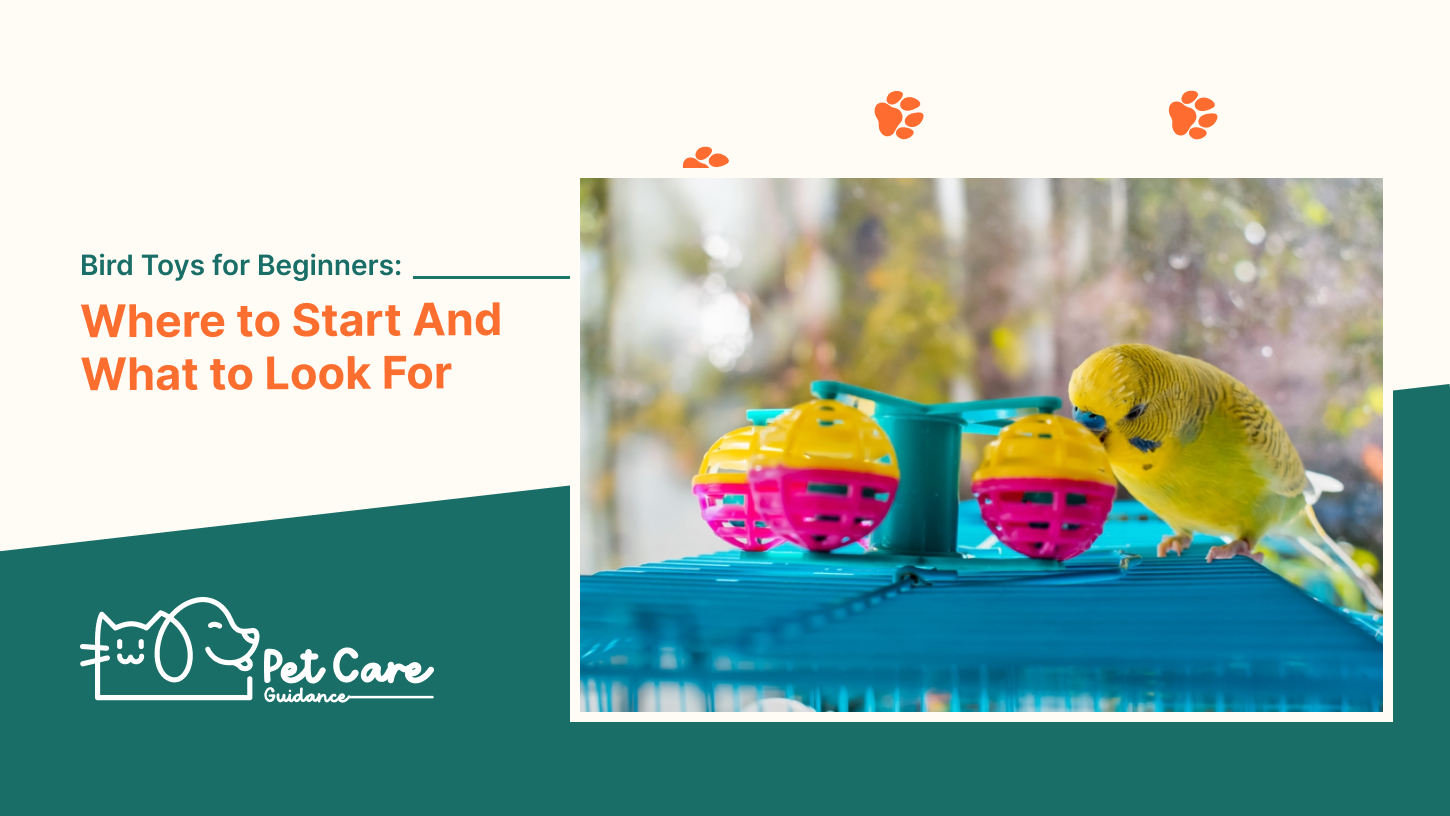When shopping for bird toys, look for toys made from materials like stainless steel, natural non-toxic wood, rope, and acrylic. Avoid indestructible toys and instead choose toys that can be destroyed, as birds love to chew and destroy things.
Chewable objects such as untreated wood blocks, branches, pinecones, rawhide, natural fibre rope, cloth, and soft pine are also great options for bird toys. Are you a beginner in the world of bird ownership and looking for the perfect toys to keep your feathered friend entertained?
Choosing the right toys for your bird is essential for their mental and physical stimulation. However, with so many options available, it can be overwhelming to know where to start. We will guide you on the basics of bird toys for beginners, including what to look for in a toy and where to start your search. By following these guidelines, you can ensure that your bird stays happy, healthy, and engaged with their toys.
Why Choosing The Right Bird Toys Is Important
Bird toys play a crucial role in ensuring the mental and physical stimulation of your bird. They not only prevent boredom and undesired behaviours but also promote overall well-being and happiness. When choosing bird toys, it is important to consider the materials used.
Stainless steel, natural non-toxic wood, rope, and acrylic make great options. Birds love to destroy things, so appropriate chewable objects like untreated wood blocks, branches, pinecones, rawhide, natural fibre rope, cloth, and soft pine can keep them engaged.
It is also recommended to introduce new toys gradually, allowing your birds to familiarize themselves with the toys over time. So, when it comes to choosing the right bird toys, prioritize your bird’s preferences and make sure they are made from safe materials for an enriching experience.

Factors To Consider When Selecting Bird Toys
| Factors to Consider When Selecting Bird Toys |
|
To ensure a satisfying playtime experience for your feathered friend, consider the following factors when selecting bird toys.
Material: Stainless steel, non-toxic wood, acrylic, and rope are excellent choices for bird toys as they are safe and durable.
Durability: It is important to avoid indestructible toys and instead opt for destructible ones. Birds have a natural instinct to destroy things, so providing toys that can be chewed and shredded will keep them entertained.
Variety: Providing a mix of different toy types is essential to stimulate your bird’s mental and physical well-being. This can include toys with bells, ladders, swings, and puzzles.
Chewability: Birds love to chew, so selecting toys with chewable objects like untreated wood blocks, pinecones, and rawhide will satisfy their natural urge to gnaw and help keep their beaks healthy.
Texture: Incorporating toys with natural fiber rope, cloth, and soft pine will provide added texture and sensory stimulation for your bird.
Recommended Types Of Bird Toys For Beginners
| Recommended Types of Bird Toys for Beginners |
| Interactive puzzle toys for mental stimulation |
| Foraging toys to promote natural foraging instincts |
| Swings and perches for exercise and activity |
| Hanging toys to encourage play and exploration |
| Puzzle toys with hidden treats for mental engagement |
Bird toys are essential for the well-being of your feathered friend. Interactive puzzle toys are great for providing mental stimulation, keeping them engaged and preventing boredom. Foraging toys are excellent for promoting their natural instincts and encouraging them to search for food.
Swings and perches help birds exercise and stay active while hanging toys provide opportunities for play and exploration. Puzzle toys with hidden treats offer mental engagement and challenge your bird’s problem-solving skills. When choosing toys, opt for those made from safe materials like stainless steel, natural non-toxic wood, rope, and acrylic.
Avoid indestructible toys as they go against a bird’s natural instinct to destroy things. Instead, choose chewable objects such as untreated wood blocks, branches, pinecones, rawhide, and natural fiber rope. By offering a variety of toys, you can ensure your bird stays mentally and physically stimulated.
Introducing New Toys To Your Bird
When introducing new toys to your bird, it’s important to take it slow and allow them to adjust at their own pace. Start by keeping the toy nearby for your bird to observe and get familiar with. Gradually move the toy closer to your bird over several days, ensuring that they feel comfortable with it.
Offering treats and positive reinforcement when your bird interacts with the toy can help encourage them to engage with it. Remember to be patient as each bird has its own preference and may take varying amounts of time to warm up to new toys. The key is to create a positive and enjoyable experience for your feathered friend.
How Many Toys Should You Provide?
| How Many Toys Should You Provide? |
| Aim for at least 5-7 toys in the bird’s cage. Rotate toys regularly to prevent boredom. Observe your bird’s preferences and adjust toy selection accordingly. |
Where To Find Bird Toys
When it comes to finding bird toys, there are a few options to consider. One option is to visit local pet stores that specialize in bird supplies. These stores often have a wide selection of toys to choose from, allowing you to find the perfect toy for your feathered friend.
If you prefer to shop online, there are many online retailers that offer a wide variety of bird toys. These retailers usually have a larger selection than local stores, giving you more options to choose from. Just make sure to read reviews and check the materials used in the toys to ensure they are safe and suitable for your bird.
If you’re feeling creative, you can also try making homemade bird toys. There are plenty of DIY options available online, with step-by-step instructions on how to create toys using household items. This can be a fun and cost-effective way to provide enrichment for your bird.
Frequently Asked Questions Of Bird Toys For Beginners: Where To Start And What To Look For
What Toys Should I Get For My Bird?
You should get bird toys made of stainless steel, natural non-toxic wood, rope, and acrylic. Avoid indestructible toys as birds enjoy destroying things. Appropriate chewable objects include untreated wood blocks, branches, pinecones, rawhide, natural fibre rope, cloth, and soft pine.
These materials are safe and entertaining for your bird.
How Do You Introduce New Toys To Birds?
To introduce new toys to birds, start by keeping the toy nearby so the bird can see it. Gradually move the toy closer over several days. Finally, allow the bird to touch the toy while you are sitting nearby for emotional support.
How Many Toys Should A Bird Have?
Birds should have a variety of toys made of stainless steel, natural non-toxic wood, rope, and acrylic. Indestructible toys are boring, as birds love to destroy things. Appropriate chewable objects include untreated wood blocks, branches, pinecones, rawhide, natural fibre rope, cloth, and soft pine.
It is important to provide a range of toys to keep birds mentally stimulated and entertained.
What To Do When You First Buy A Bird?
When you first buy a bird, make sure to provide appropriate toys made of materials like natural wood, rope, and acrylic. Avoid indestructible toys and offer chewable objects like untreated wood blocks, branches, and pinecones. Gradually introduce new toys and let your bird get comfortable with them.
Conclusion
Choosing the right bird toys for beginners is crucial for the happiness and well-being of your feathered friend. Whether it’s stainless steel, natural wood, rope, or acrylic, the materials should be safe and engaging. Remember, birds love to destroy things, so provide them with appropriate chewable objects like untreated wood blocks, branches, and natural fibre rope.
Gradually introduce new toys to your bird, and observe their preferences to find the best options. With the right toys, your bird will be entertained, mentally stimulated, and enjoy a happy and healthy life. Happy bird toy shopping!


